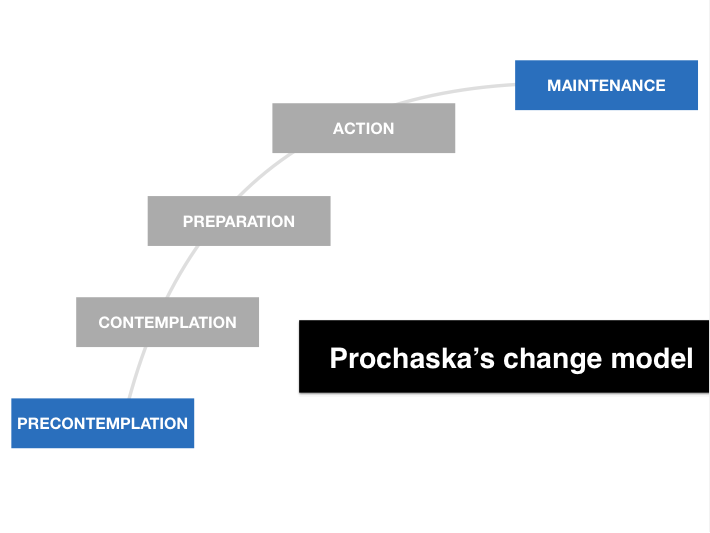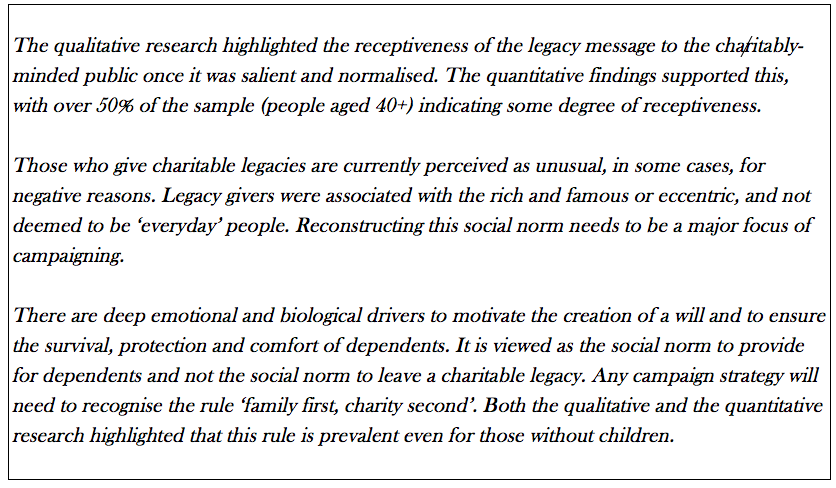CDE project 10 section 3: putting the donor-led experience at the heart of legacy fundraising growth
- Written by
- The Commission on the Donor Experience
- Added
- April 28, 2017
A donor-led viewpoint to change behaviour
What do donors need and want in order to make the giving of a gift in their wills meaningful, normal, joyful, easy and rewarding?
This question is a critical one if we are to unlock the potential of legacies to fund good causes. Given that there are so few people relative to the total population who leave a gift in their wills, the challenge is to identify why this number remains so small and to find ways to work together to build a better and more insight-driven legacy proposition and experience. Considering with the insight and needs of a donor should be the starting place for any fundraiser, charity or organisation, but we know this isn’t always the case in practice, although intentions may be good. Being able to meet donors’ needs to deliver our offer and opportunity requires two levels of insight:
- Donor audience insight that is relevant to all charities and is appropriate for most donors and potential donors
- Specific cause or organisational insight relating to the proposition, offer and language used by an individual charity to make sure it connects with its specific audience and, where possible, with individuals.
We run the danger repeating research that tells us the same insights about the audience in the guise of trying to find unique insights into individual causes or organisations. Some things are universal truths and we need to develop ways to build approaches and innovate building on those universal truths and insights to establish a platform.
In recent years, we have seen a movement develop around behavioural science (a branch of science (as psychology, sociology, or anthropology) that deals primarily with human action and often seeks to generalize about human behavior in society- https://www.merriam-webster.co...). This approach was used to develop Social Marketing (Social marketing is an approach used to develop activities aimed at changing or maintaining people’s behaviour for the benefit of individuals and society as a whole – http://www.thensmc.com). Social Marketing combines ideas from commercial marketing and the social sciences as a proven tool for influencing behaviour. These influences were drawn upon in 2007 when the UK Campaign consortium, Remember a Charity, shifted its strategy towards influencing behavioural change.
At the heart of this shift was understanding where supporters and potential supporters were in the decision-making process. To support this, the campaign adopted a model called Prochaska’s change model (https://en.wikipedia.org/wiki/...)

Much of the challenge of legacies is to reach the vast majority of the potential market that is actively considering a legacy gift. Our marketing thrust has been towards action, whereas many approaches are not. We needed to recognise that we had to focus on getting people to consider leaving a legacy from a place in which they probably had not.
In order to embrace this approach, Remember a Charity sought to identify the barriers, challenges and opportunities for leaving gifts in wills, and commissioned a research study of the will-writing public. This was carried out by TNS (http://www.tnsglobal.com), one of the largest research agencies worldwide, which provides actionable insights to help make impactful decisions. The agency interviewed a large sample of 2000+. They sought to identify the willingness of and barriers to the 40+ audience considering leaving a gift. The final report stated:

The report established that barriers, once identified and addressed, opened up the way for the wider public to engage with and actively consider a legacy; as the report states,

These barriers defined that which was in the way. See the summary chart below. When addressed, we must champion the factors that donors might then want to embrace.

Focusing on behavioural change has allowed significant changes to take place in the last 10 years. Most charities are clear that family and friends come first, and this has helped to change the public’s perception of having to choose between family and a charity, to considering leaving something to both. Many charity campaigns are focused on the donor and on helping them see donors who are ‘just like them’ and who have given a gift. Many are creating campaigns that are softer in their approach, less technical and focused on the behaviours and motivations of prospective supporters. But there is much to do to create that social norm the research has identified.
This approach goes to the heart of what we consider to be our core method for raising money through legacies.

This means normalising legacies so that everyone can understand and take part. It means opening up the prospect of a legacy to a large audience that is not currently considering one. It means measuring consideration as much as commitment.
Short of a culture change so that the charitable legacy will in time become socially acceptable and even desirable the measure of a person’s humanity and concern for others. It has to become the right thing to do. Such a change will only be achieved if we can work at it together.
Ken Burnett Relationship Fundraising
This approach should see a shift from the emphasis on legacy marketing to a new emphasis on legacy influence. Marketing and the tools used will remain at the heart but, by adopting a focus on changing behaviour, for that is what we must do if we are to persuade more people to not only consider leaving a legacy but also to take action, we need to change our approach to influencing people, creating a social norm, talking about it and inspiring supporters to help through a gift in their will rather than feeling ‘marketed’ to by providing a wonderful, uplifting experience that encourages everyone wants to bequeath a gift.


















